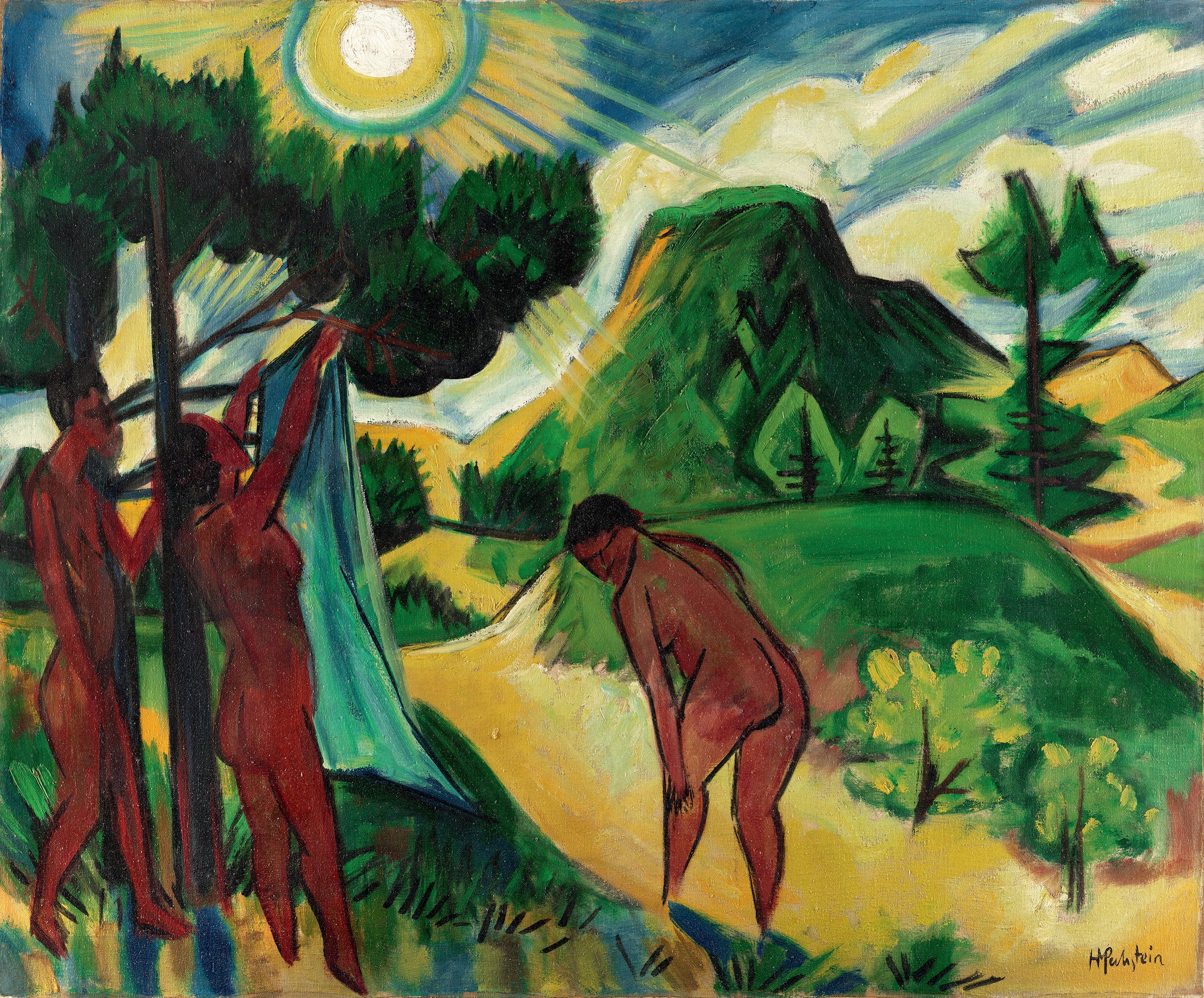Summer
Following Max Pechstein’s first trip to Nidden in the summer of 1909, this small fishing village became the artist’s Nordic paradise. Located beside a coastal lagoon separated from the sea by a narrow strip of land called Kurische Nerhung, at the easternmost end of the Baltic coast of East Prussia, now Lithuania, since the end of the nineteenth century Nidden had been a regular place of pilgrimage for artists, who sought the unspoilt landscape of this faraway land. Just as Heckel and Schmidt-Rottluff had discovered the town of Dangast on the North Sea coast in 1907, Pechstein found in Nidden a preindustrial landscape that remained intact, a place where he experienced a perfect at-oneness with nature that led him to explore his creativity without inhibitions and develop his own, mature pictorial style.
Pechstein returned to Nidden in 1912, and again in 1919 and 1920 after his trip to the South Seas and involvement in the Great War. In 1919, deeply affected by the horrors of the war, in which he fought in the ranks of the German army, the artist was surprised to find that Nidden remained intact after seven years. As he tells in his autobiography, this return caused his works, then ‘somewhat clumsy, hesitant, and angular in form’, to become agile and expressive again, as in this enclave he was ‘once more possessed by the untrammelled freedom that still existed there after all’.
In 1921, when Nidden ceased to belong to Germany under the Treaty of Versailles, the artist set about searching for a new enclave on the Baltic coast. He settled in Leba (Pomerania, now Poland), where he found a landscape that to an extent reminded him of his beloved lagoon. ‘Although other people lived here, other kinds of fishermen, […] the vast area of dunes bore a certain resemblance to the Kurische Nehrung, which made me want to work here’, he recalled years later.
Pechstein’s first outdoor nudes had been painted at the Moritzburg Lakes during the summer of 1910, but it was on the Baltic coast that he devoted himself more intensively to this genre. There he painted numerous scenes of unclad figures in the landscape or amid the waves, using as models both his wife and the fishermen’s daughters, who bathed naked when the weather was good. The painting belonging to the Museo Thyssen-Bornemisza displays three figures with angular forms and bronzed skin drying their bodies in the sun amid the dunes. The blazing midday sun infuses the whole composition with golden light.
The work belonged to Pechstein’s friend Karl Lilienfeld, a German art dealer who emigrated to the United States. After opening his New York gallery in 1932, Lilienfeld successively presented Pechstein’s work to the American public, particularly following the advent to power of the Nazis leading to the declaration of his painting as degenerate art and the consequent confiscation of his works from German museums.
Paloma Alarcó










